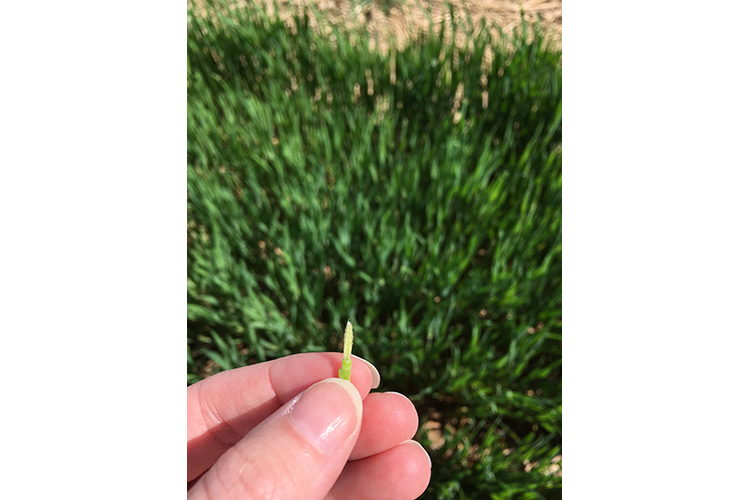Time for Kentucky wheat growers to check for freeze damage
Time for Kentucky wheat growers to check for freeze damage

Kentucky wheat producers may want to check their fields in the next couple of days for signs of freeze damage.
Much of the state experienced temperatures below 32 degrees Fahrenheit the nights and mornings of March 30-April 3. While the temperatures were cold, they did not reach the typical threshold for wheat damage, which is below 24 degrees F for more than two hours for Feekes 6 and 7. However, Carrie Knott, director of the University of Kentucky Research and Education Center, said nearly all her fields at the center have signs of freeze damage.
“Freeze damage does not appear until seven days after the first freeze event,” said Knott, who is a faculty member in the UK College of Agriculture, Food and Environment. “Now is really the earliest time producers would begin to see damage, if there is any.”
The wheat at Princeton was at Feekes 6 and 7, which is the typical growth stage for this time of the year. The fields appeared mostly healthy with a visual inspection, but when Knott dissected the heads, she could see signs of freeze damage.
“The dissected heads at Feekes 7 look white, easily break and feel papery,” Knott said. “They should be a light green, shiny and feel like plastic. Wheat at Feekes 6 had heads that looked like a light brown line with no sign of floral structure. They should be shiny, firm and somewhat transparent.”
While the Princeton wheat damage could be an isolated event, Knott encouraged producers to dissect their wheat heads to check for potential freeze damage to their crop.
When freeze damage occurs at this growth stage, the crop will likely produce another head and recover much of the yield, as long as normal growing conditions hold through harvest. Yield loss may potentially be between 10% to 20% in wheat with freeze damage at Feekes 6 and 7.
For more information about assessing wheat freeze damage, producers may refer to UK Cooperative Extension Service’s publication AGR-253: Identifying Damage and Estimating Yield Reductions in Wheat. It is available online at https://bit.ly/39UHBzg or by contacting the local extension office.
Extension Weather

